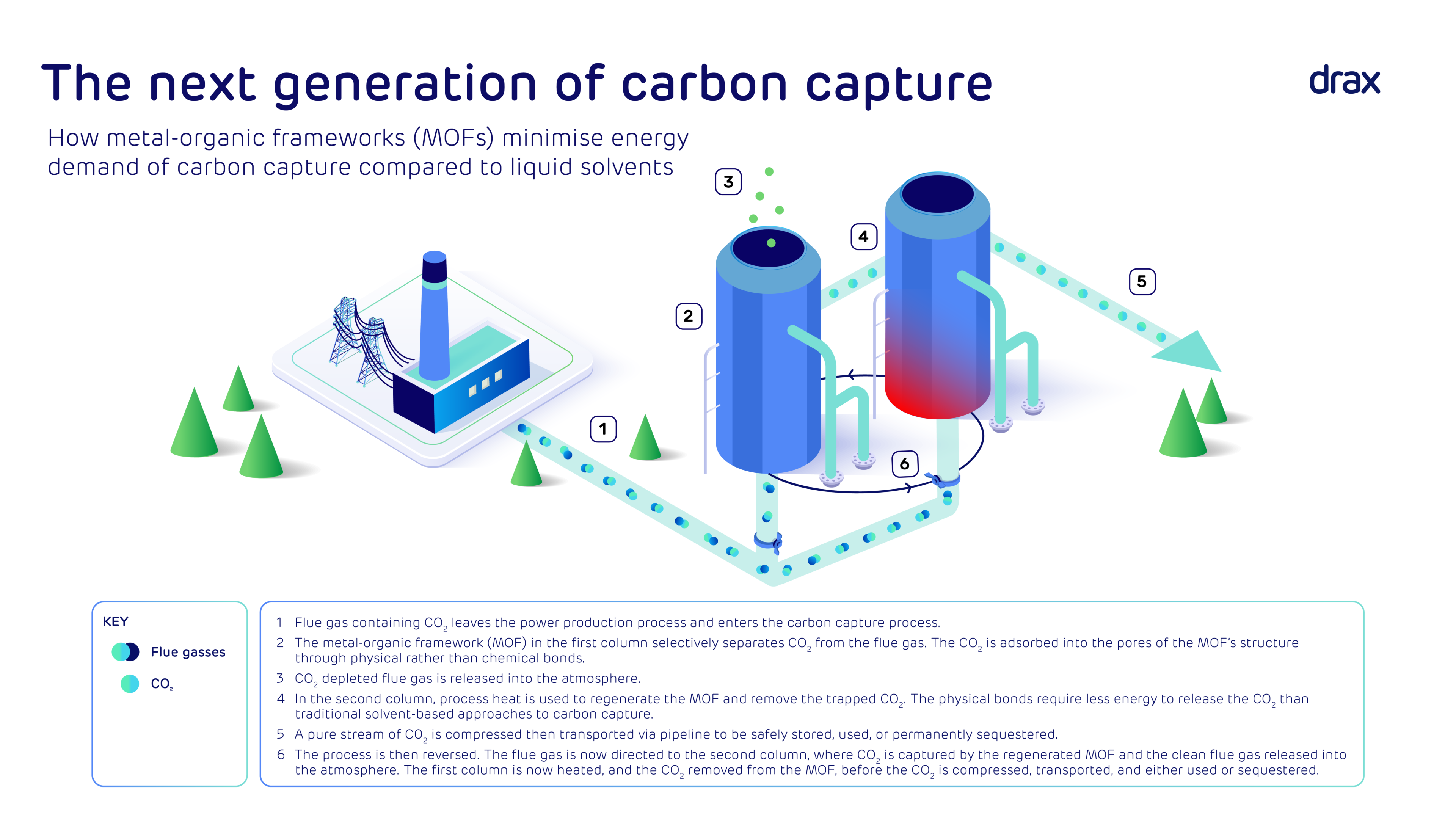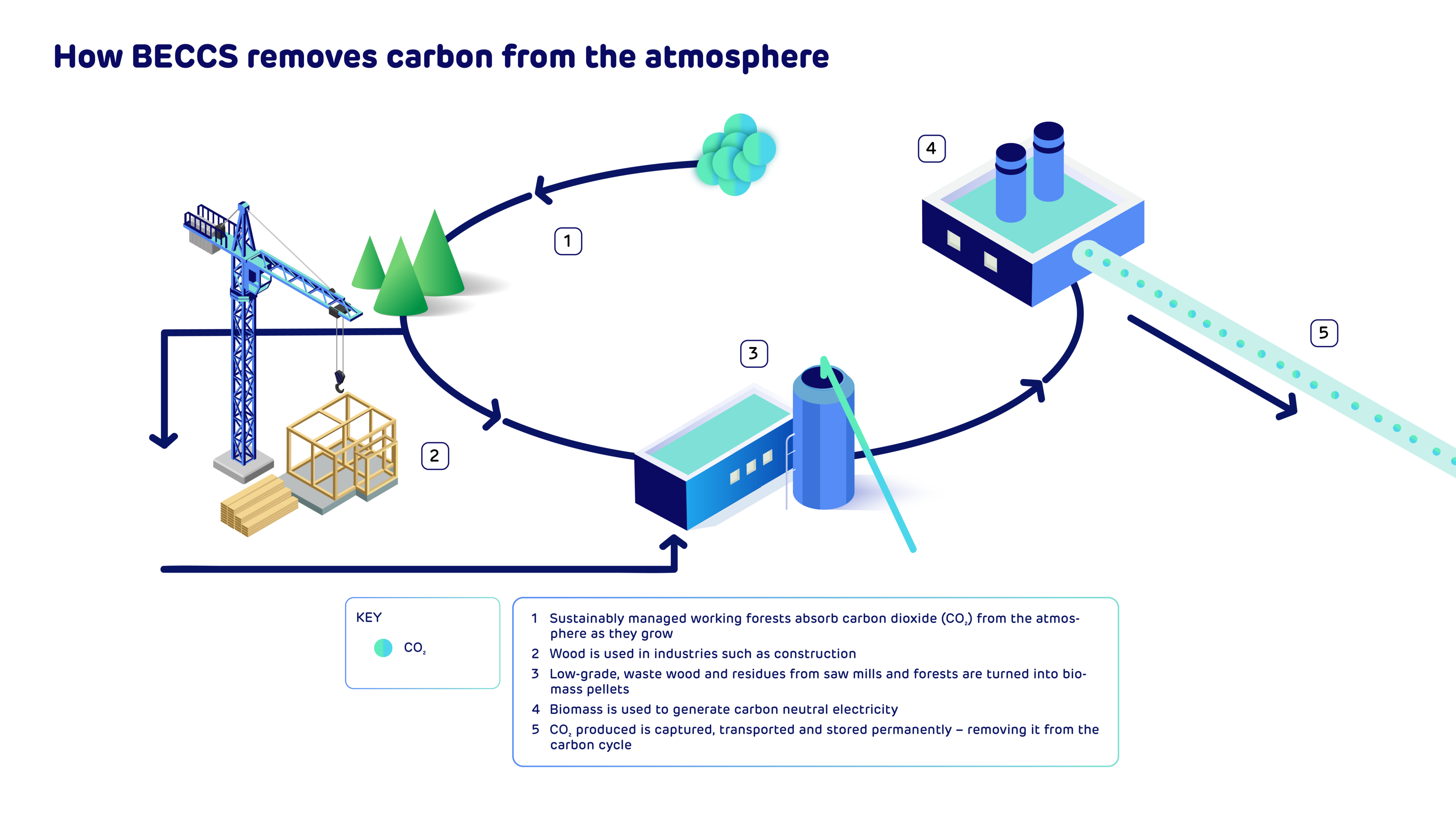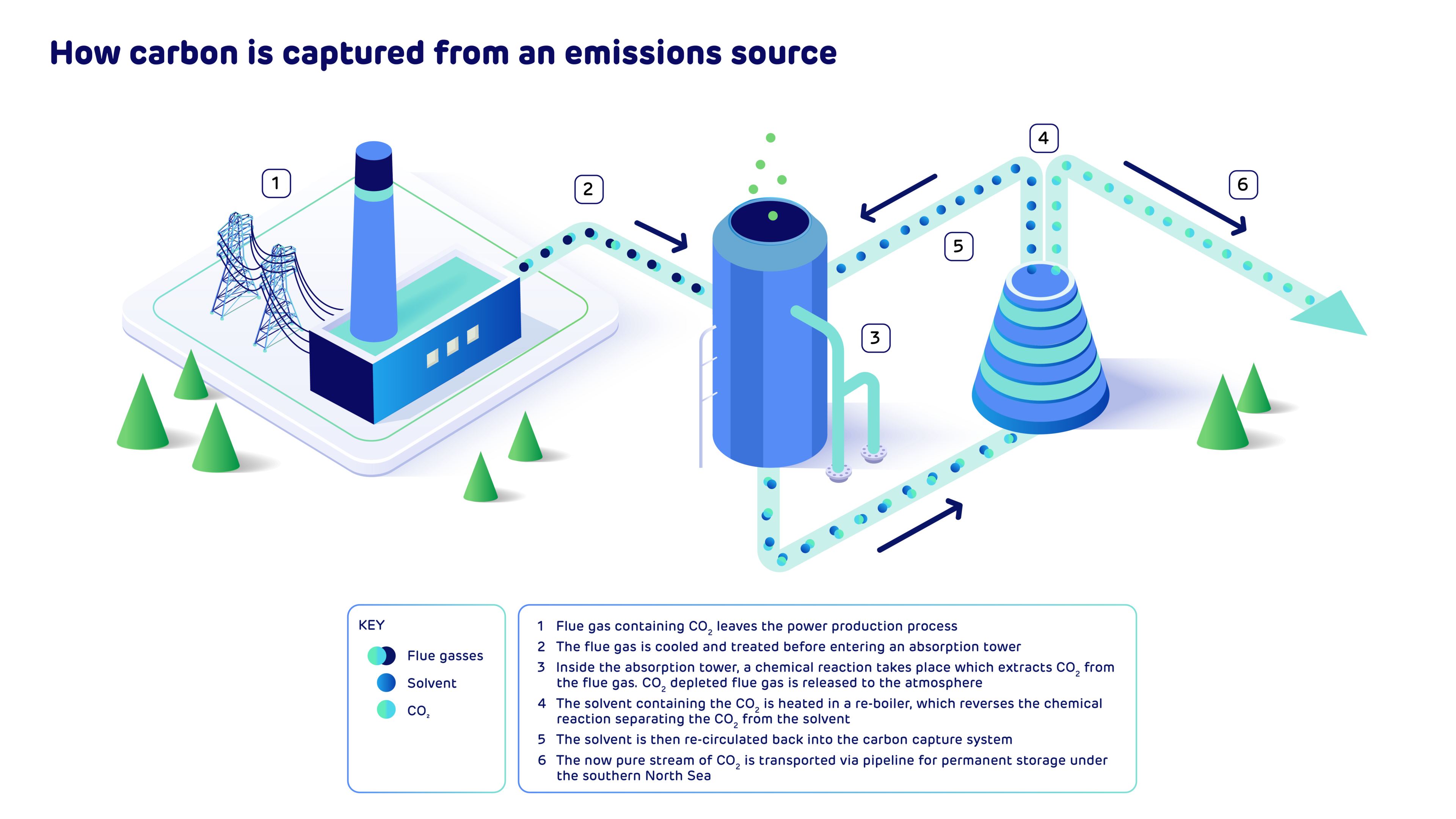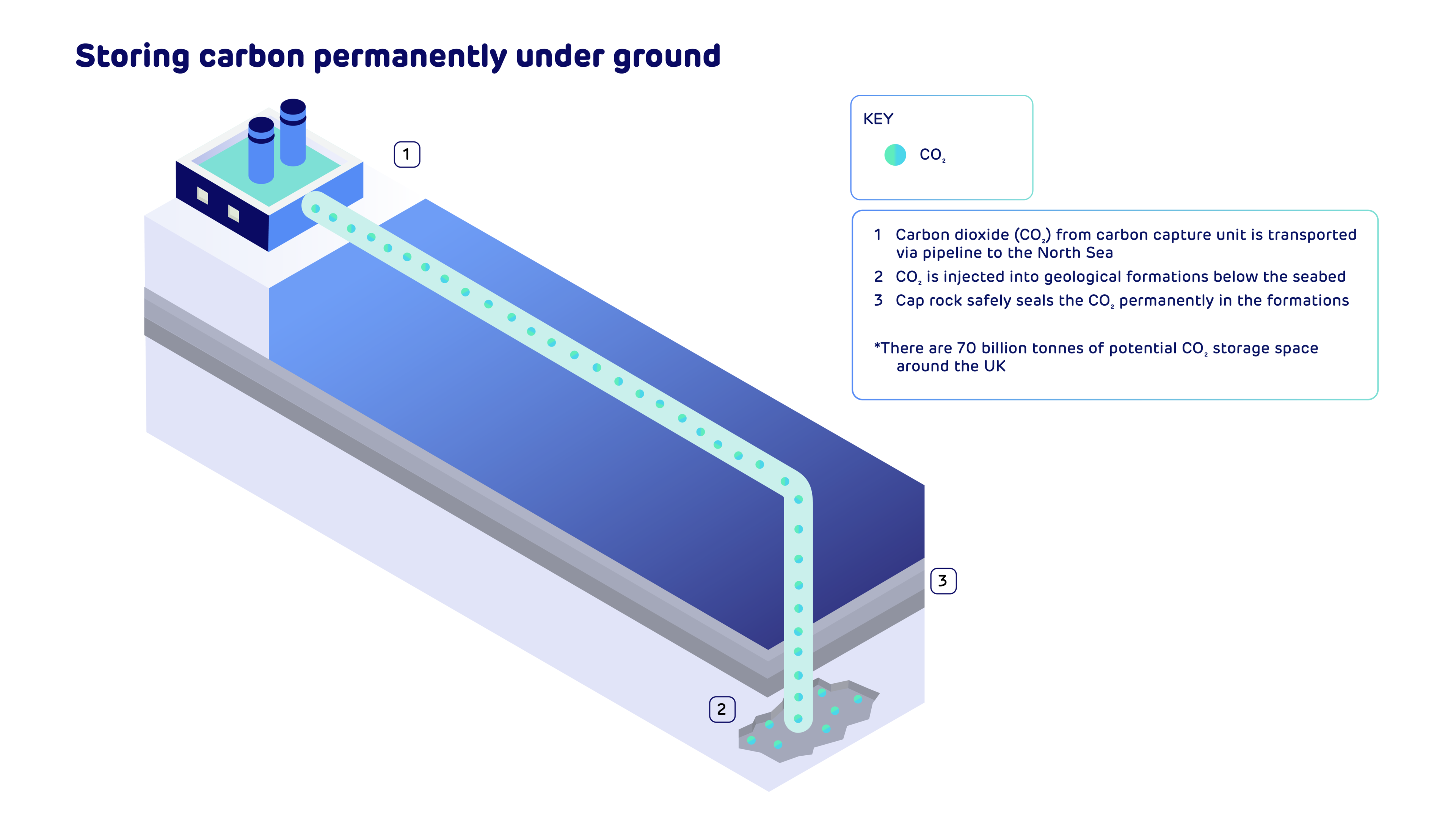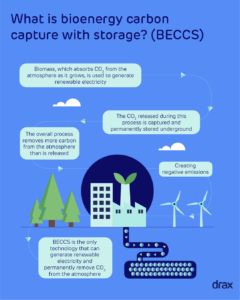What is BECCS?
Bioenergy with carbon capture and storage is the process of capturing and permanently storing carbon dioxide (CO2) that is generated during the production of electricity from sustainable biomass.
This is the only carbon removal technology that also generates low carbon renewable power.
US opportunities for carbon removals
BECCS is increasingly being explored and deployed around the world at heat and power stations, factories and waste-to-energy plants as countries and organisations aim to achieve net zero through negative emissions.
The US is ramping up their research and development of BECCS; the landmark Inflation Reduction Act demonstrated the vital need for biomass and BECCS in the view of the US Government.
BECCS by Drax can help the U.S. provide climate leadership quickly and affordably by enabling the rapid procurement of renewable, 24/7 baseload electricity and capturing carbon from the atmosphere.
Why is BECCS important for decarbonisation?
The U.S. will need to remove 0.8 to 2 billion* metric tonnes of carbon by 2050 to do its share of tackling climate change.
Given the scale of the challenge and what’s at stake, experts everywhere, including the Intergovernmental Panel on Climate Change (IPCC), the California Air Resources Board (CARB) and the U.S. Government, agree that to reach net zero we must remove dangerous levels of carbon dioxide from the atmosphere.
Unlike the linear, irreversible process of emitting carbon from fossil fuels, sustainable biomass exists in a closed carbon cycle.
By adding carbon capture and storage technology, the carbon cycle is broken. Instead of being released into the atmosphere, carbon is transported and stored in a secure, geological formation underground, producing what’s known as an engineered carbon dioxide removal.
*Princeton Net Zero America Project, Final Report (2020),Page 34
The first BECCS by Drax facility in the U.S. will:
3Mt
Remove 3 million tonnes (Mt) of carbon from the atmosphere
1,000 jobs
Estimates suggest that a project will create around 1,000 permanent direct jobs from plant operations and across the forest value chain
2TWh
Generate 2 terawatt hours (TWh) of reliable, continuous, renewable power
Frequently Asked Questions
- What is BECCS?
- How does BECCS achieve negative emissions?
- Is BECCS a proven technology?
- Is BECCS sustainable?
- Will BECCS at Drax create any new jobs?
- How will BECCS be funded?
- How will the captured carbon be stored?
BECCS is an innovative technology that has been developed to permanently remove carbon dioxide from the atmosphere.
BECCS provides negative emissions, as well as stable, renewable electricity and will play a vital role in tackling the climate crisis and supporting energy security.
What is BECCS?
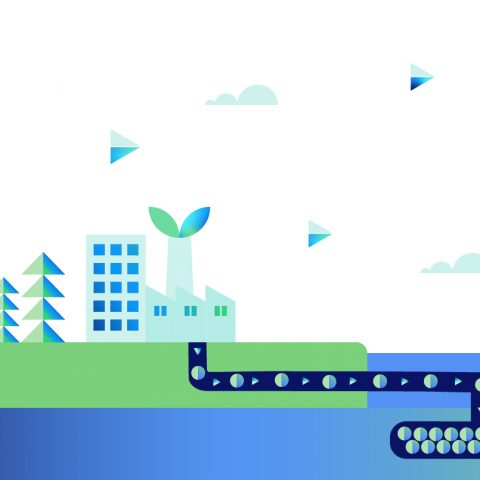 Negative emissions are created when you permanently remove more CO2 from the atmosphere than is created across your operations.
Negative emissions are created when you permanently remove more CO2 from the atmosphere than is created across your operations.
With BECCS, flue gases are produced when sustainable biomass is used to generate renewable electricity, these gasses are captured through a chemical reaction. The captured CO2 is then stored permanently in deposits such as saline aquifers found under the sea. The process of electricity generation becomes carbon negative, as more CO2 has been removed from the atmosphere than has been added.
What are negative emissions?
![]()
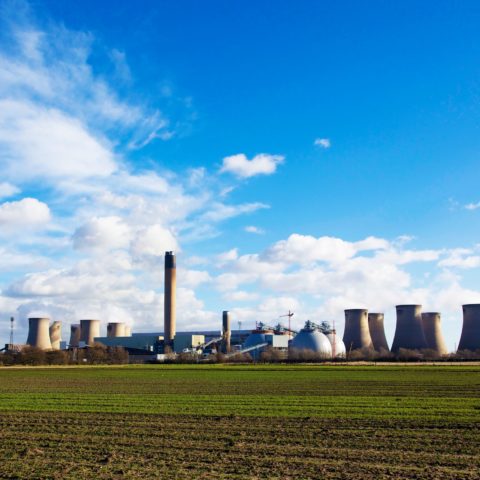 Yes. Drax has been testing a number of carbon capture technologies since our first trail began in 2018.
Yes. Drax has been testing a number of carbon capture technologies since our first trail began in 2018.
Carbon capture technology is not new and has been used in the fossil fuel and oil & gas industries for many years. There are currently 26 CCS facilities operating worldwide, with a further 39 either planned or under construction.
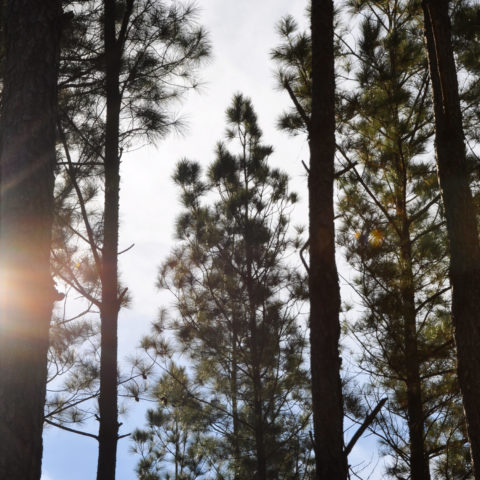 Research commissioned by Drax shows there is enough sustainable biomass available globally to support BECCS projects to capture up to 4GT of CO2 without adversely impacting forest health, biodiversity or food security.
Research commissioned by Drax shows there is enough sustainable biomass available globally to support BECCS projects to capture up to 4GT of CO2 without adversely impacting forest health, biodiversity or food security.
This is equivalent to four times the annual CO2 emissions from commercial aviation.
Learn more about sustainable biomass
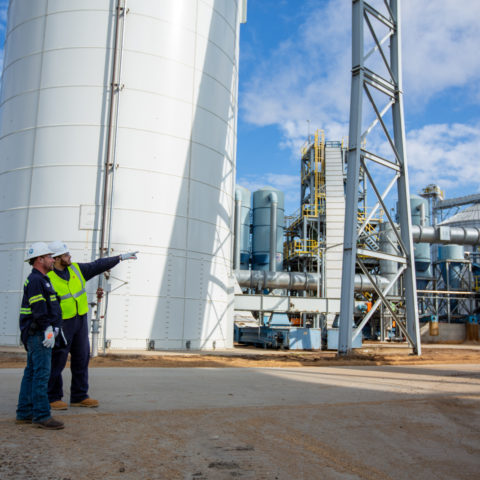 BECCS by Drax offers a decarbonisation route that protects and creates jobs retaining high-quality jobs and boosting local economies.
BECCS by Drax offers a decarbonisation route that protects and creates jobs retaining high-quality jobs and boosting local economies.
In the US, preliminary estimates suggest that a project will create around 1,000 permanent direct jobs from plant operations and across the forest value chain, and an additional 3,500+ indirect and induced jobs supported throughout the supply chain. Supporting thousands of jobs during the construction phase.
BECCS careers
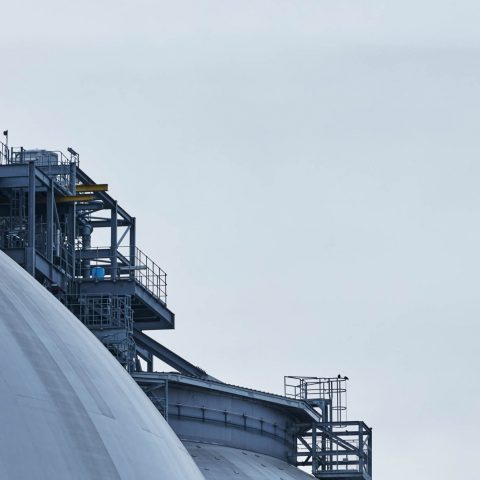 In the current energy crisis and economic climate, it’s vital that new projects such as BECCS provide cost effective solutions that not only support energy security, but also deliver on net zero targets.
In the current energy crisis and economic climate, it’s vital that new projects such as BECCS provide cost effective solutions that not only support energy security, but also deliver on net zero targets.
By having the right policies which incentivise investment we could see a repeat of the success seen with the CfDs for offshore wind – that sector has reached grid parity and no longer requires subsidies.
A recent UK report commissioned by Drax by consultancy Frontier Economics looked into the optimum funding methods that would allow negative emissions technologies like BECCS be delivered cost effectively.
BECCS delivery
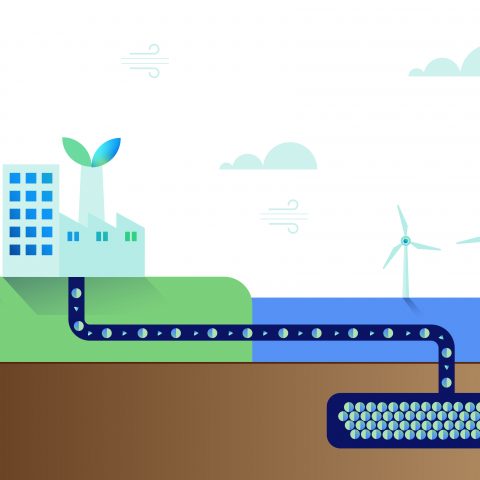
Captured carbon can be safely and permanently injected deep underground into naturally occurring porous rock formations. The carbon is trapped in multiple ways:
- Structurally—animpermeable caprock above the reservoir stops CO2 migrating back to the surface.
- In solution — porous rocks often contain salty water which CO2 dissolves into.
- Residually — as tiny isolated bubbles in the pore space of the rock.
- As a mineral — CO2 can react with the surrounding rock creating new solid minerals.
How do you store CO2 and what happens to it when you do?
BECCS is an innovative technology that has been developed to permanently remove carbon dioxide from the atmosphere.
BECCS provides negative emissions, as well as stable, renewable electricity and will play a vital role in tackling the climate crisis and supporting energy security.
What is BECCS?
View More Negative emissions are created when you permanently remove more CO2 from the atmosphere than is created across your operations.
Negative emissions are created when you permanently remove more CO2 from the atmosphere than is created across your operations.
With BECCS, flue gases are produced when sustainable biomass is used to generate renewable electricity, these gasses are captured through a chemical reaction. The captured CO2 is then stored permanently in deposits such as saline aquifers found under the sea. The process of electricity generation becomes carbon negative, as more CO2 has been removed from the atmosphere than has been added.
What are negative emissions?
View More![]()
 Yes. Drax has been testing a number of carbon capture technologies since our first trail began in 2018.
Yes. Drax has been testing a number of carbon capture technologies since our first trail began in 2018.
Carbon capture technology is not new and has been used in the fossil fuel and oil & gas industries for many years. There are currently 26 CCS facilities operating worldwide, with a further 39 either planned or under construction.
View More Research commissioned by Drax shows there is enough sustainable biomass available globally to support BECCS projects to capture up to 4GT of CO2 without adversely impacting forest health, biodiversity or food security.
Research commissioned by Drax shows there is enough sustainable biomass available globally to support BECCS projects to capture up to 4GT of CO2 without adversely impacting forest health, biodiversity or food security.
This is equivalent to four times the annual CO2 emissions from commercial aviation.
Learn more about sustainable biomass
View More BECCS by Drax offers a decarbonisation route that protects and creates jobs retaining high-quality jobs and boosting local economies.
BECCS by Drax offers a decarbonisation route that protects and creates jobs retaining high-quality jobs and boosting local economies.
In the US, preliminary estimates suggest that a project will create around 1,000 permanent direct jobs from plant operations and across the forest value chain, and an additional 3,500+ indirect and induced jobs supported throughout the supply chain. Supporting thousands of jobs during the construction phase.
BECCS careers
View More In the current energy crisis and economic climate, it’s vital that new projects such as BECCS provide cost effective solutions that not only support energy security, but also deliver on net zero targets.
In the current energy crisis and economic climate, it’s vital that new projects such as BECCS provide cost effective solutions that not only support energy security, but also deliver on net zero targets.
By having the right policies which incentivise investment we could see a repeat of the success seen with the CfDs for offshore wind – that sector has reached grid parity and no longer requires subsidies.
A recent UK report commissioned by Drax by consultancy Frontier Economics looked into the optimum funding methods that would allow negative emissions technologies like BECCS be delivered cost effectively.
BECCS delivery
View More
Captured carbon can be safely and permanently injected deep underground into naturally occurring porous rock formations. The carbon is trapped in multiple ways:
- Structurally—animpermeable caprock above the reservoir stops CO2 migrating back to the surface.
- In solution — porous rocks often contain salty water which CO2 dissolves into.
- Residually — as tiny isolated bubbles in the pore space of the rock.
- As a mineral — CO2 can react with the surrounding rock creating new solid minerals.
How do you store CO2 and what happens to it when you do?
View more FAQs on biomass here.
Working with governments
We work with regional and national policymakers in the US, to support Governments in developing effective carbon removal policies and investment frameworks.
We collaborate with a wide range of stakeholders – including communities, partner organisations, trade associations, NGOs, think tanks and academia – to share the benefits of BECCS and ensure that the needs of the industry as well as our position are considered. It also gives us the opportunity to gain a better understanding of their priorities and concerns. We also support different stakeholders in campaigning for, and raising issues of importance to, their constituents to enable skills, jobs, and investment.






